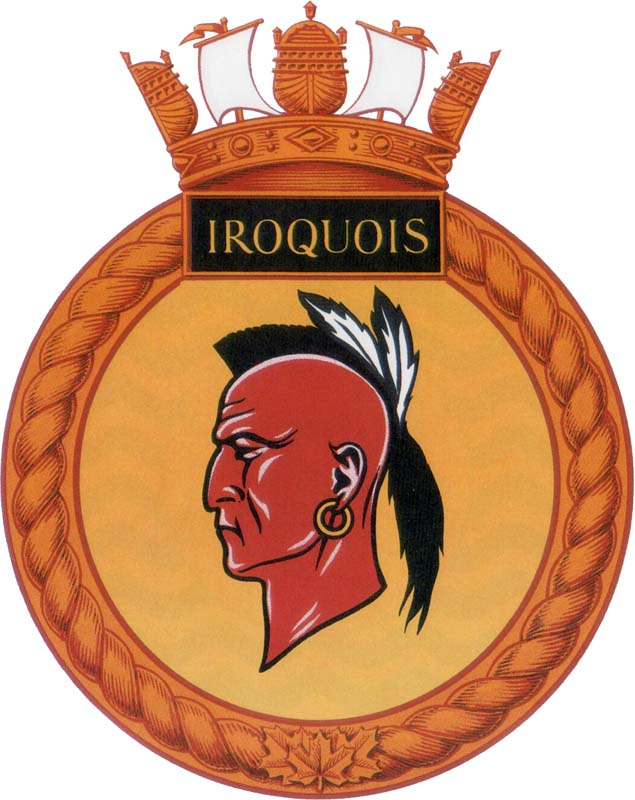HMCS IROQUOIS Badge

Blazon
Or the head of an Iroquois brave couped at the base of the neck properly coloured and wearing two eagle feathers in his hair and a ring or pendant from the ear.
(Glossary of Heraldic Terms)
Significance
In 1942, a commanding officer of this ship initiated steps to procure a badge for the ship. This resulted in the making of an unofficial one in the shape of a shield which bore the head of an Iroquois brave, with traidityonal hair style, earring, and face paint. It was taken from a painting by the late CW Jeffries and contrary to the usual procedure in heraldry it faced the right as one looked at it. When a definite policy regarding ship's badges was laid down at the end of hostilities it was approved that the head of an Iroquois berave, facing the opposite direction to that in the original badge, would be used for reasons of sentiment and appropriateness.
Remarks
Iroquois (I) was a member of the Tribal class of destroyers. Commissioned in November 1942, she wore pennants G89 and 217 until she was paid off in October 1962. Iroquois (II) was the lead ship of the Tribal class of Helicopter carrying destroyers. Commissioned in July 1972, she wore pennant 280 until being paid off in 2015.
Motto
RELENTLESS IN CHASE
Colours
Gold and Black
Battle Honours
The Second World War
ATLANTIC, 1943; ARCTIC, 1943-45; BISCAY, 1943-44; NORWAY, 1945.
United Nations Operation-Korea-1950-1953
KOREA, 1952-53.
References
Badges Of The Canadian Navy by Arbuckle, J. Graeme. Halifax: Nimbus Publishing, 1987.
CFP 267 - Badges of the Canadian Forces, Minister of Supply and Services Canada, 1977.
